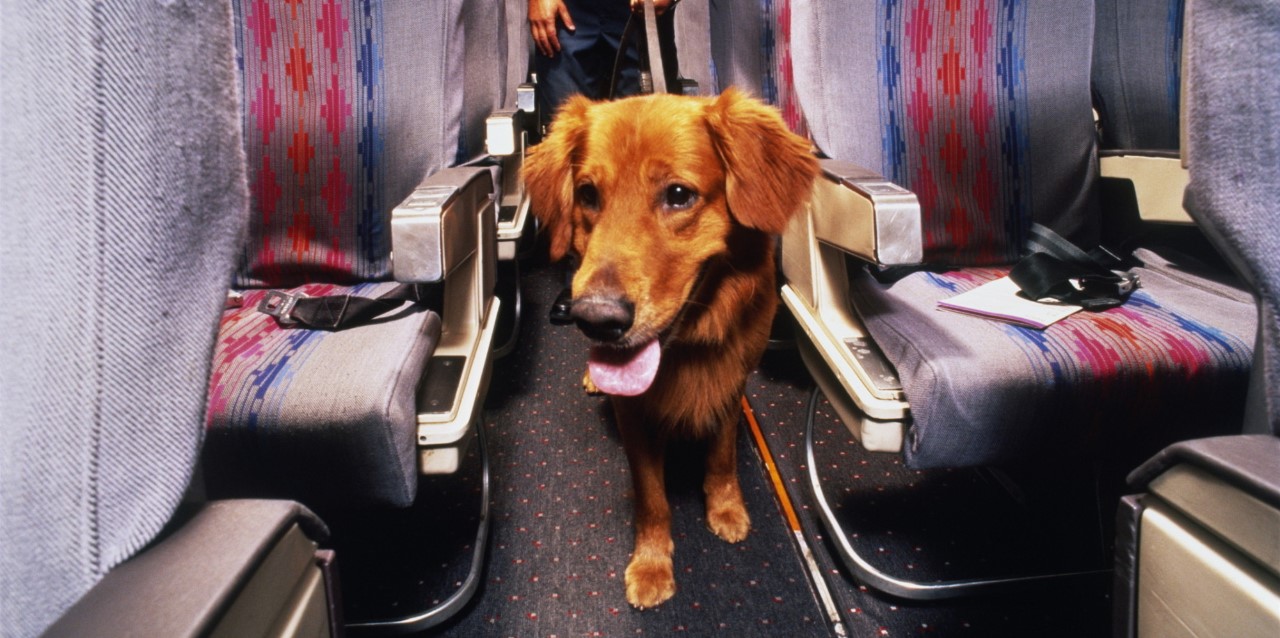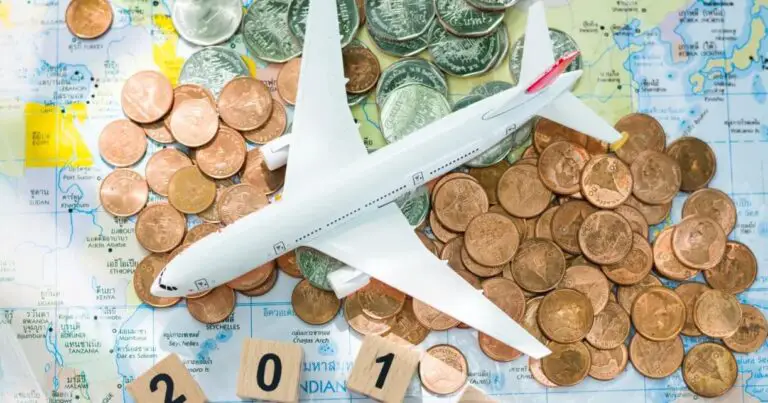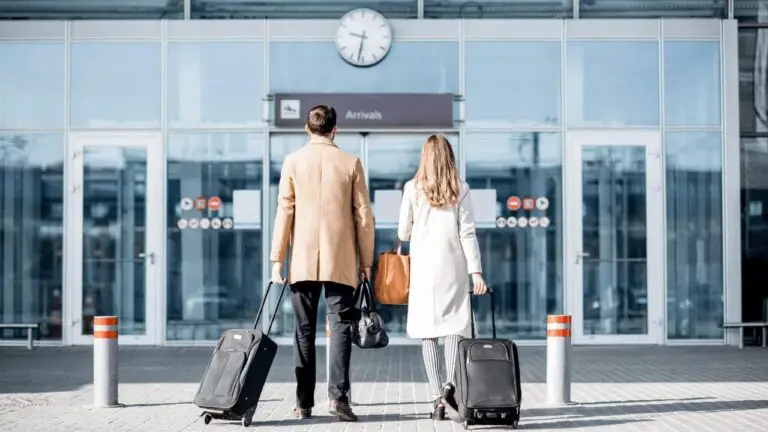
For many pet owners, leaving Fido behind and traveling without your furry best friend can be heartbreaking. You want adventure, but not at the cost of separation from your beloved pup.
The question often asked is – can you buy your dog a plane ticket to fly together?
The short answer is sometimes yes, you can purchase an airline seat for your dog, but it depends on the airline, the dog’s size, required documents, and other regulations.
While major commercial airlines typically don’t allow dog plane tickets, some smaller charter services will permit buying a second seat for your pet. Rules and restrictions abound though when it comes to air travel with dogs.
In this comprehensive guide, we’ll cover everything you need to know about flying with pets, including:
- Airline pet policies, size limits, required documents
- Tips for preparing dogs for air travel
- Buying a separate plane seat for your dog
- Flying internationally or with service/large dogs
- Safely transporting pets in cargo holds
- Best practices for smooth pet flights
So let’s get started!
What Are the Rules and Regulations Around Flying With Pets?
Before dashing to the airport with Fido in tow ready for adventure, it’s critical to understand the regulations commercial airlines have in place for pet air travel.
The policies vary significantly from one airline to the next, so research the specific carrier carefully before booking tickets. Some key requirements tend to be similar across the board though.
Airline Pet Policies and Container Rules
Almost all airlines require animals to travel in an approved pet carrier that fits underneath the airline seat in front of you. For carry-on pets traveling in cabin, common airline policies include:
- Size limitations – Carriers are usually restricted by a weight limit of around 18 pounds (dog and carrier combined) and a size limit of around 18″ long x 11″ wide x 11″ high. These correspond to fitting under most airplane seats.
- One pet per carrier – Only one dog or cat permitted per container, except occasionally for unweaned young traveling with a nursing female.
- Age minimums – Kittens or puppies usually must be at least 8 weeks old and weaned for air travel. Some airlines permit slightly younger ages though.
- Pet fees – Charges averaging $100-$200 each way are typical to have pets accompany passengers in aircraft cabins. Higher for international flights.
- Advance reservations required – Airlines generally need notification of pet air travel for capacity planning.
- Health certificates – Most airlines require an examination by a vet within 10 days of travel to provide a health certificate. Regulations differ for domestic and international pet flights.
Additionally, pets must remain inside carriers for the entire flight – no mid-air potty walks allowed!
Restrictions on Taking Dogs Out of Carriers
Unlike human passengers, little Fido won’t get an opportunity to stretch his legs or take a bathroom break mid-flight. Airlines enforce strict containment rules when it comes to pet air travel:
- No pet can leave its carrier once boarded – Until arrival at your destination, Fluffy must stay in her carrier without exception. This also applies to airport waiting areas.
- Only one animal per carrier – Airlines do not permit transporting two pets in the same container unless under special circumstances like an unweaned puppy with its mother.
- Carriers must be stowed properly – Pet containers must fit under seats with adequate room for passenger legs and emergency exits or in overhead compartments designed for carry-on luggage.
- Proper identification – Carriers should have visible labels indicating live animal contents.
Failure to follow airline pet travel rules can lead to denied boarding or penalties. DOT law also allows airlines to mandate pets remain in cargo holds rather than cabins if owners disregard container policies.
What Airlines Allow Pets in Cabin?
Many major domestic and international commercial airlines do enable air travel with pets accompany passengers inside aircraft cabins. Although their size, breed restrictions, associated fees, and other regulations differ substantially.
Let’s compare pet policies across some of the most common U.S. domestic airlines.
Pet Policies of Major U.S. Airlines
The major domestic airlines have adopted unique restrictions when it comes to allowing pets onboard flights with owners:
American Airlines
- Allows dogs, cats, household birds, unweaned puppies
- Weight limit of combined 100 lbs dog + carrier
- $125-$150 fee each way
Delta Air Lines
- Allows domesticated dogs, cats, birds
- No specific weight limit but must fit under seat
- $125 fee each way
- Banned dog breeds list including snub-nosed
United Airlines
- Allows domestic dogs cats, rabbits, household birds
- Weight limit of combined 20 pounds dog + carrier
- $125 fee each way
Southwest Airlines
- Allows only dogs and cats
- Must be small enough to fit under seat
- $125 fee each way
This gives a sample of the disparities involved. Be sure to consult an individual airline’s formal pet policy before purchasing tickets.
Pet Policies of International Airlines
For travelers looking to jet set around the globe with their fur baby, many international carriers also facilitate bringing pets in aircraft cabins for an extra fee. Common allowances are:
Air Canada
- Allows dogs, cats, ferrets, birds, rodents, reptiles
- Weight limit combined with carrier of 22 lbs
- $50-$100 fee each way
British Airways
- Allows dogs and cats only
- Weight limit combined of 20-100 lbs
- Price varies by flight duration with average around $196 each way
Qantas
- Allows dogs, cats, birds only
- Dogs limited by crate size – combined 23 kg max
- Price based on route flown, approx. £1400 to £6500 range
Emirates
- Allows dogs, cats, some birds, reptiles
- Approx. 50 Ibs: $500, 53–70 lbs: $650, 70 lbs: $800 fee range each way
As evidenced above, significant variability exists depending on both airline and destination country pet import rules. Due diligence is imperative before reserving international pet air travel.
Buying Your Dog an Actual Plane Seat
As convey by the introductory question framing this article, a hot area of interest is purchasing an airline seat specifically for flying with canine companions. Is this really allowed or just an urban legend though?
The clear answer might surprise you – some airlines actually do permit buying Fido his own seat!
Most Major Airlines Don’t Allow Dog Seats
While fun to entertain fantasies of Rover comfortably lounging by the window enjoying aerial views, the hard truth is most commercial passenger airlines simply prohibit pets occupying human airplane seats.
For these standard airlines focused on human transportation from A to B, pets represent revenue-reducing burdens. Between allergen, cleaning, boarding/deplaning logistics, and space limitations, supporting dogs and cats as anything beyond cargo just doesn’t pencil out financially.
So big carrier policies limit approving pets solely in confined under-seat cages with restrictive size conditions. No dog plane tickets here!
Small Charter Airlines Allow Extra Pet Seats
However, the game changes with semi-private and charter flight services catering to niche markets. Without squeezing every square footage for fare-paying seats, these specialty carriers leverage pet-friendly branding to competitive advantage.
A few examples allowing dogs plane seats with an extra purchased ticket include:
JSX – Regional hop-on jet service allowing medium-large dogs with extra seat. Weight limit 79 lbs.
Surf Air – All-you-can-fly membership airline welcoming pets under 25 lbs when owner buys them their own seat.
Tradewind Aviation – For private charter flights, dogs of all sizes receive their own seat at owner’s discretion.
As evidenced above, smaller charter-type airlines present rare options for dogs to fly comfortably in plane cabins vs. cargo with purchased seat.
Just beware the usual size vs. weight limits and added bag fees still apply!
Benefits of Buying Your Dog a Plane Seat
Given most commercial airlines preclude pup plane tickets, why go through the extra hassle and expense when exceptions exist? Significant benefits justify the cost for many pet parents:
- Avoid risk of dangerous or deadly pet air travel in luggage compartments
- Prevents exposure to temperature extremes in cargo holds
- Lets dogs remain with familiar owners instead of strangers
- Offers pets more space to relax and move around
- Reduces stress with familiar smells/sounds/sight
For most pet owners, keeping furry companions safe and comfortable trumps minor luggage hassles or seating charges.
Bottom line – if you can swing the cost and identify an airline permitting dog plane seats, it’s a no-brainer for many.
Tips for Preparing Your Dog for Air Travel
While buying tickets checks the logistical box for pet air travel, properly preparing Fido for his maiden aerial voyage represents an equally critical checklist item. From acclimatization to documentation to prevention planning, don’t overlook key steps for smooth sailing once airborne.
Acclimate Your Dog to His Carrier in Advance
Since dogs must remain in carriers for entire flights, it’s vital they become comfortable in their travel containers before departure date. By gradually introducing the crate for brief, then lengthening durations, anxiety and restlessness is prevented mid-air.
Use tasty treats and toys to reward time inside with happy associations. Be sure your pet can stand, sit, and move moderately within the carrier as well.
Properly Identify Your Pet
Clear identification makes reunification easier if your dog manages to slip his collar or harness. Be sure his tag has your current cell phone, home number, and address. Many owners get pets microchipped too.
It’s also wise to affix a secondary tag to the carrier itself for extra precaution. Include your contact information, destination address, and any special needs instructions.
Gather Proper Veterinary Paperwork
Depending on destination, your airline may require current vaccination records and special certifications from licensed veterinarians. For international flights, an import permit from the arrival country is often mandatory too.
Confirm paperwork requirements for your route well in advance so there’s ample time to schedule vet visits and secure necessary approvals. Digital copies are wise backups too.
Prepare Emergency Supplies
Despite best efforts, what if poor Fluffy gets airsick or nature calls mid-flight? Be ready for such contingencies by packing:
- Paper towels, doggie cleanup bags
- Water, collapsible bowl
- Medications, first aid kit
- Favorite toys or blankets
- Leash/collar, muzzle if necessary
By anticipating needs, you can swiftly address them despite tight quarters. Your fellow passengers will appreciate such courtesies as well!
Flying Internationally with Pets
For globetrotting pet owners desiring four-legged companionship abroad, international relocation with dogs involves additional considerations beyond intranational flights.
Import Laws and Quarantine Policies
Each country maintains unique importation rules for animals which must be strictly followed to gain entry approval. Quarantine periods from 21 days to 6 months are also common to monitor for disease.
Flight Connections and Total Duration
International trips may require multiple flight segments. While assessing legalities, factor total travel time to ensure your pet can reasonably hold-up. Some airlines also limit allowable combined connection durations.
In-Cabin vs. Cargo
On lengthy overseas trips, airlines rarely permit animals remaining in cabins. Prepare for potential cargo transport where extreme heat, cold, noise and other unrest must be endured – hopefully humanely if attendants exercise proper duty of care. But tragic exceptions demonstrate risks are real.
Total Costs
From paperwork fees to quarantines, cargo to lodging, don’t underestimate real expenses of pet air travel beyond airfare alone. International relocation with animals easily totals thousands above basicowner costs. But also can deeply enrich cultural immersion.
In summary – it’s indeed possible to expatriate or vacation abroad with loyal companions, but extensive research, preparation, expense and risk comes with that prospect.
Flying with Service Dogs and Exceptionally Large Breeds
Significant demand exists from disabled residents hoping to travel seamlessly with indispensable service animals. Owners of outsized dog breeds face dilemmas too on standard planes lacking accommodations.
Can these niche flyers access air travel on common carriers? Sometimes with proper documentation.
Airline Policies for Service Animals
Governmental agencies mandate most airlines transport legitimate support dogs assisting passengers with verified disabilities – generally free of standard pet fees. But proper credentials must still be presented. Rules for emotional support vs. fully-trained service animals also differ. Thorough vetting helps avoid denied boarding disappointments.
Accommodations for Large Dog Breeds
Big boys like Great Danes, Mastiffs and St. Bernards typically exceed under-seat allowances. While airlines can’t discriminate by breed, neither can they practically host mammoth hounds in cabins. Chartered planes remain best options for XL dogs. But some airlines like Delta permit large dogs traveling as service animals or assigned to cargo holds.
When standard capacities don’t suffice, advanced planning and forethought allows exceptional flyers like service and huge canines reach altitude too.
Safely Transporting Pets in Airplane Cargo Holds
For most airlines, the default solution for non-conforming pets unable to reside in cabins simply relegates them to cargo holds and luggage compartments. While convenient for carriers and staff, significant animal health and safety issues demand consideration here.
Is Travel in Luggage Holds Safe?
Consumer watchdog groups document hundreds of pet deaths and injuries annually resulting from air travel in plane cargo areas. From temperature extremes to equipment mishaps, risks abound lacking proper oversight.
Some airlines like United have firm policies refusing to transport snub-nosed dog breeds like Boxers in holds given mortality stats. But scrutiny by lobbyists and lawmakers aim to better enforce ground staff obligations in handling live air cargo everywhere.
Mitigating Cargo Hold Hazards
If cabin companionship gets rejected at the gate, avoiding calamity in the belly demands action:
- Book direct, short duration flights to lessen exposure
- Insist on climate-controlled pressurized holds
- Use airline-approved containers with accessibility
- Attach visible live animal markers and feeding guides
- Tape cooling ice packs around cage walls
- Ensure accessibility for handlers at connections
- Purchase temporary pet insurance
- Implement contingency custody plans if delays ensue
While flying with pets in cargo areas has inherent risks, smart preparation and insistence on proper protocols helps stacks the odds for safe passage.
Best Practices for Smooth Air Travel with Pets
After breaking down key considerations across air travel planning, preparation, costs and risks regarding pets onboard flights, let’s recap best practices for optimizing Fido’s aerial adventures.
Picking an Airline
Research individual airline pet policies vigilantly, including fees, permits, breed restrictions and liability clauses. Chartered flights offer most flexibility.
Ready for Take-Off
Acclimate pets to crates comfortably, affix identifiers prominently, prepare essentials like cleanup supplies, and secure necessary paperwork well beforehand.
Preparing for Landing
Budget extra time during boarding/deplaning to manage pets and luggage. Have contingency contacts and funds if facing delays or destination complications over legal limits or availability of animal housing.
While air travel with animals has complications, through proper planning, partners, and provisions, cherished pets can comfortably access adventures above the clouds alongside grateful owners.
Conclusion – Purchase Plane Tickets for Your Pets Sometimes
At journey’s start, we asked can you buy dog plane tickets to fly together? As conveyed over numerous sections examining rules, regulations, alternatives and best practices – the answer depends on context.
Most standard airlines preclude pets occupying seats. But charter carriers present options for dogs gaining coveted plane access with purchased tickets. Either way, proper preparations prevent turbulence for animal aircraft passengers.
Now confidently equipped with comprehensive intelligence for navigating pet air travel, jet-set the skies with beloved Fido stowed safely on board. Just be sure to comparison shop carriers, accommodate size/breed restrictions, ready regulatory approvals and supplies in advance, and vigilantly monitor conditions from takeoff to touchdown.
Bon voyage with bow-wows in the blue beyond!






